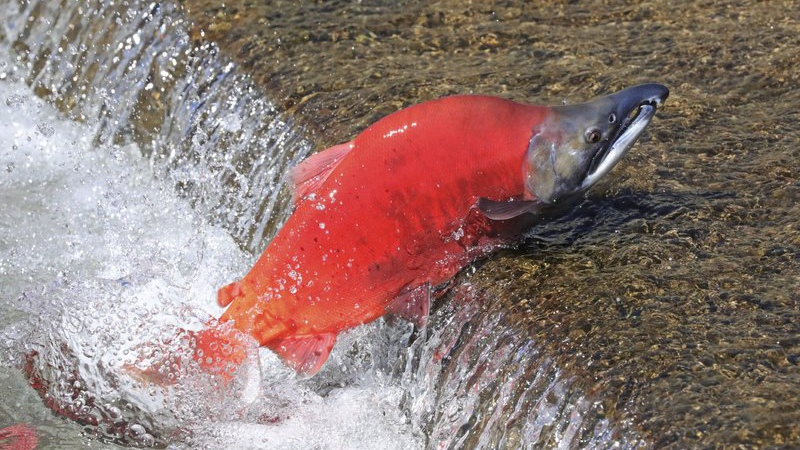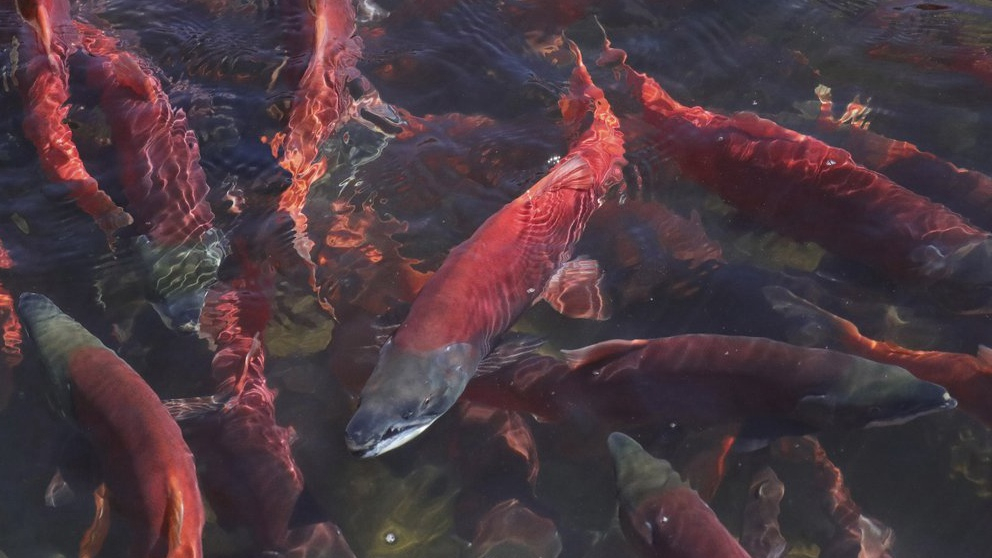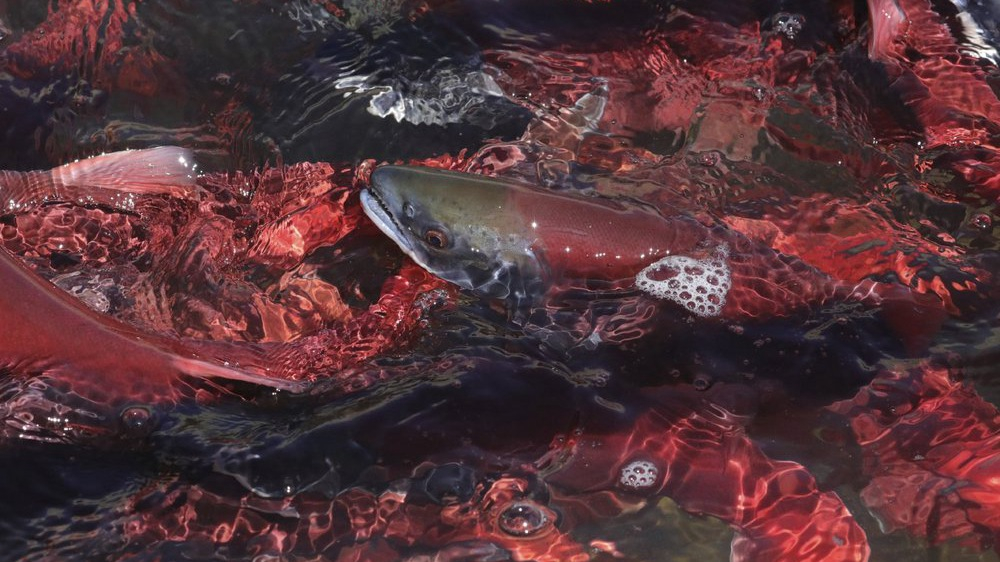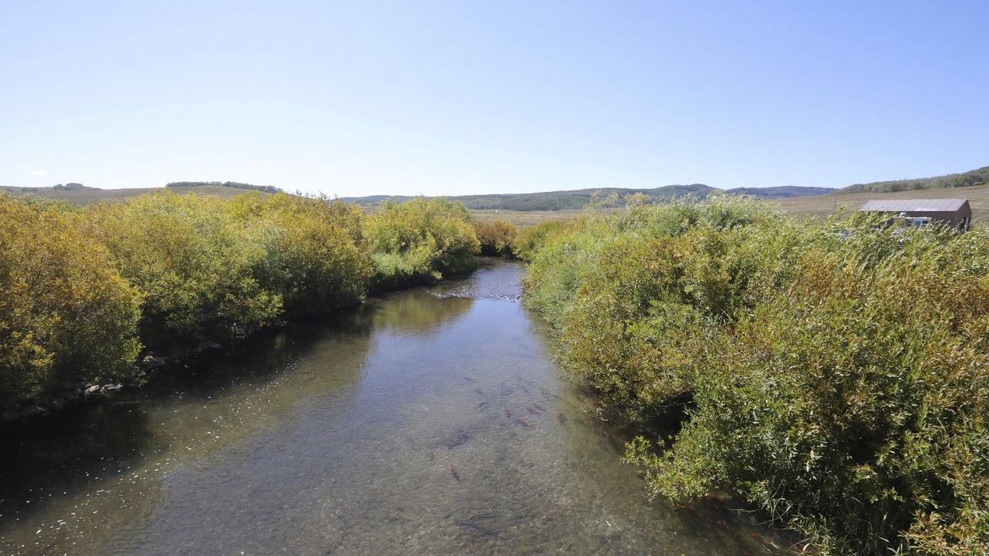
A Kokanee salmon swims up stream during the spawning period along the Strawberry River in U.S. state of Utah. The salmon run goes from the end of August till October. /AP Photo
A Kokanee salmon swims up stream during the spawning period along the Strawberry River in U.S. state of Utah. The salmon run goes from the end of August till October. /AP Photo
Wildlife technicians are trapping Kokanee salmon near a mountain reservoir in U.S. state of Utah and collecting their eggs and milt at spawning time.
The fish's transformation from a silver color to fluorescent red was on display on September 18 at a fish trap along the Strawberry River, about 32 kilometers southeast of Heber City, Utah.
Kokanee salmon is a landlocked species of the sockeye salmon (Oncorhynchus nerka). They live their entire lives in freshwater and are usually smaller than their ocean migrant siblings.
The sockeye are silver in color while living in the ocean. When they return to spawning grounds, their bodies become red and their heads turn green. For the Kokanee salmon, even though they do not migrate to sea, they are still silver before spawning.

Kokanee salmons swimming in flocks in the Strawberry River. /AP Photo
Kokanee salmons swimming in flocks in the Strawberry River. /AP Photo

Their bodies become red and their heads turn green. /AP Photo
Their bodies become red and their heads turn green. /AP Photo

The Strawberry River. /AP Photo
The Strawberry River. /AP Photo
During spawning period, the salmon begin to absorb their scales. The carotenoid pigments in their flesh are thus visible. The pigments are thought to help the fish absorb oxygen from the water.
Utah Division of Wildlife Resources spokeswoman Faith Heaton Jolley says the fish eggs and milt, or sperm, are sent to a fish hatchery. Once the hatchery-raised fish are big enough, they are sent to lakes around the state.
Jolley says the hatchery-raised salmon have an 80- to 90-percent chance of becoming adult fish, compared to the five-10 percent chance for the salmon in the wild.
(Cover image via AP)
(If you want to contribute and have specific expertise, please contact us at nature@cgtn.com.)
Source(s): AP